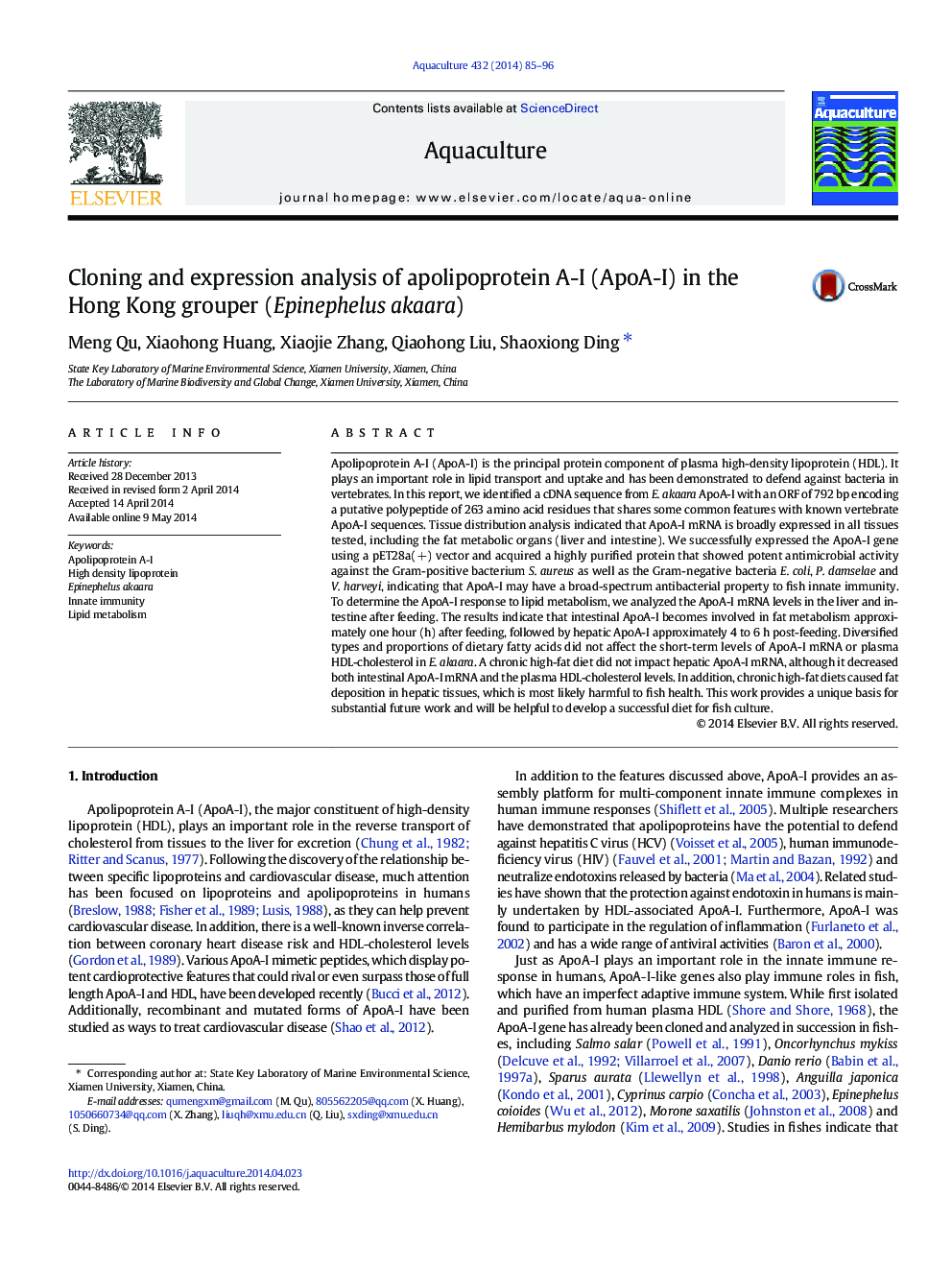| Article ID | Journal | Published Year | Pages | File Type |
|---|---|---|---|---|
| 2421800 | Aquaculture | 2014 | 12 Pages |
•The cDNA of ApoA-I gene in Hong Kong grouper was cloned and sequenced.•The transcript expression of EaApoA-I is ubiquitous in all tissues tested.•EaApoA-I has a potent activity against Gram-positive and Gram-negative bacteria.•Intestinal and hepatic EaApoA-I shows different responses to feeding.•Chronic high-fat diets may cause fat deposition in hepatic tissues.
Apolipoprotein A-I (ApoA-I) is the principal protein component of plasma high-density lipoprotein (HDL). It plays an important role in lipid transport and uptake and has been demonstrated to defend against bacteria in vertebrates. In this report, we identified a cDNA sequence from E. akaara ApoA-I with an ORF of 792 bp encoding a putative polypeptide of 263 amino acid residues that shares some common features with known vertebrate ApoA-I sequences. Tissue distribution analysis indicated that ApoA-I mRNA is broadly expressed in all tissues tested, including the fat metabolic organs (liver and intestine). We successfully expressed the ApoA-I gene using a pET28a(+) vector and acquired a highly purified protein that showed potent antimicrobial activity against the Gram-positive bacterium S. aureus as well as the Gram-negative bacteria E. coli, P. damselae and V. harveyi, indicating that ApoA-I may have a broad-spectrum antibacterial property to fish innate immunity. To determine the ApoA-I response to lipid metabolism, we analyzed the ApoA-I mRNA levels in the liver and intestine after feeding. The results indicate that intestinal ApoA-I becomes involved in fat metabolism approximately one hour (h) after feeding, followed by hepatic ApoA-I approximately 4 to 6 h post-feeding. Diversified types and proportions of dietary fatty acids did not affect the short-term levels of ApoA-I mRNA or plasma HDL-cholesterol in E. akaara. A chronic high-fat diet did not impact hepatic ApoA-I mRNA, although it decreased both intestinal ApoA-I mRNA and the plasma HDL-cholesterol levels. In addition, chronic high-fat diets caused fat deposition in hepatic tissues, which is most likely harmful to fish health. This work provides a unique basis for substantial future work and will be helpful to develop a successful diet for fish culture.
